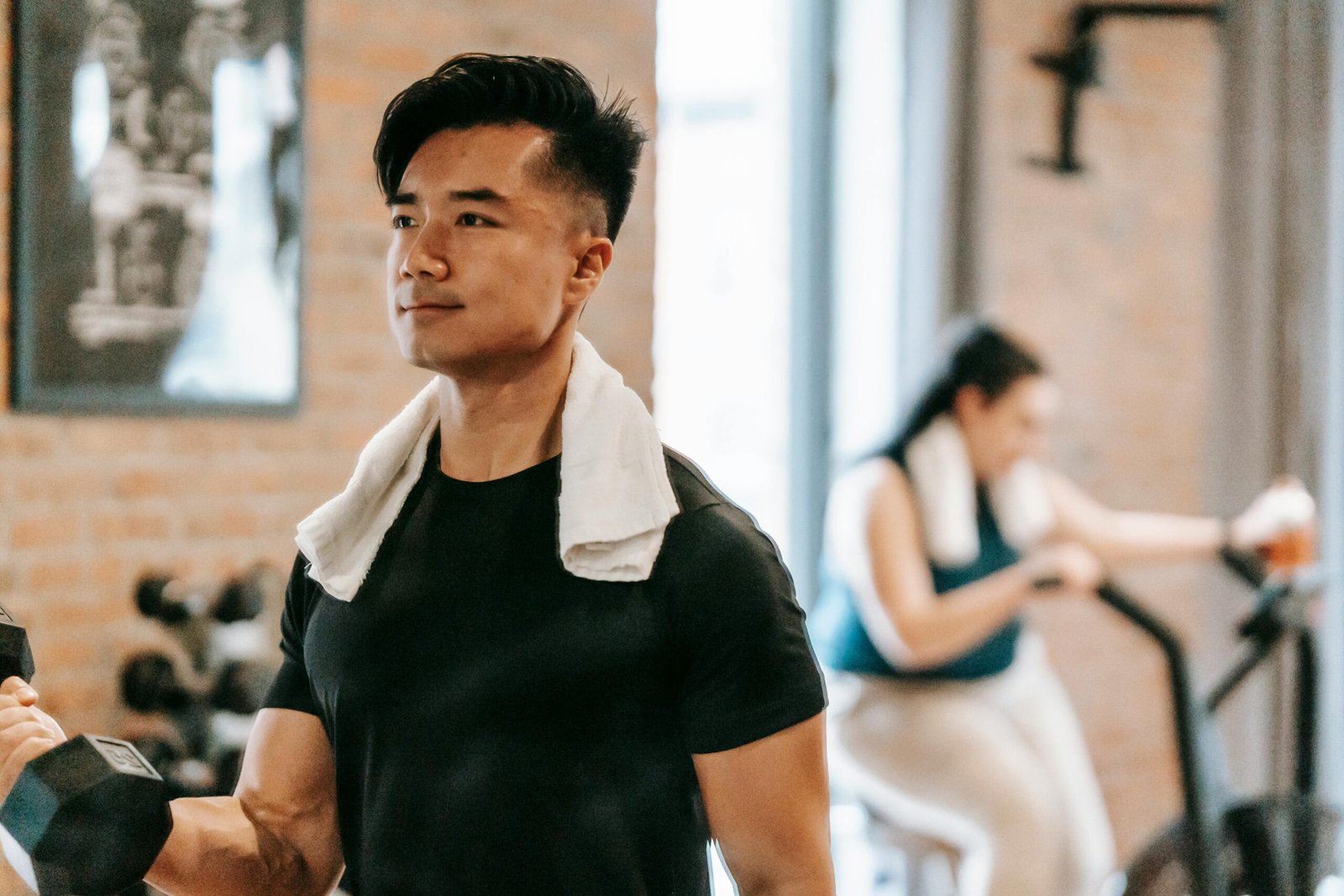
In the world of golf, the question often arises: do you have to be fit in order to excel at this sport? Many may assume that golf is a game of leisure, requiring little physicality. However, as we explore the intricate connection between fitness and golfing prowess, it becomes apparent that being in shape can greatly impact your game. So, let’s set foot on the greens and explore the correlation between fitness and golfing success!
Physical Benefits of Fitness for Golf
Improved swing mechanics
Being physically fit can greatly improve your swing mechanics in golf. When your body is strong and flexible, you can achieve a full range of motion throughout your swing. This allows you to generate more power and accuracy in your shots. With increased flexibility in your muscles and joints, you are able to maintain proper posture and alignment throughout your swing, leading to more consistent and efficient mechanics.
Increased power and distance
Fitness plays a crucial role in increasing your power and distance in golf. Building strength in your core muscles, legs, and upper body can provide the stability and power needed to transfer energy from your body to the club. By incorporating strength training exercises into your fitness routine, such as core exercises and resistance training, you can improve your ability to generate more clubhead speed, resulting in longer and more powerful drives.
Enhanced balance and stability
Having good balance and stability is essential for a successful golf swing. By incorporating balance training exercises into your fitness routine, such as balance drills and proprioception exercises, you can improve your overall stability on the course. This will help you stay grounded and maintain control throughout your swing, allowing for better accuracy and consistency in your shots.
Reduced risk of injury
Physical fitness can also significantly reduce your risk of injury while playing golf. By keeping your body strong and flexible, you can minimize the strain on your muscles and joints. Regular exercise and flexibility training can help prevent common golf injuries, such as strains, sprains, and overuse injuries. Additionally, by maintaining a balanced fitness program that includes strength and endurance training, you can improve your overall endurance and resilience, reducing the likelihood of fatigue-related injuries.
Mental Benefits of Fitness for Golf
Improved focus and concentration
Fitness activities can have a positive impact on your mental state, improving your focus and concentration on the golf course. Regular exercise releases endorphins, which can boost your mood and enhance cognitive function. By incorporating fitness into your routine, you can experience improved mental clarity and focus, allowing you to stay present and engaged during your rounds of golf.
Better stress management
Golf can be a mentally challenging sport, and managing stress is essential for success on the course. Engaging in regular physical activity can help reduce stress and promote relaxation. Exercise releases neurotransmitters, such as serotonin and dopamine, which can improve your mood and help combat stress. By maintaining a fitness routine, you can enhance your ability to cope with the pressures and challenges that come with playing golf.
Enhanced decision-making skills
Fitness can also improve your decision-making skills on the golf course. Engaging in regular exercise stimulates blood flow to the brain, enhancing cognitive function and improving your ability to make quick and accurate decisions. With improved decision-making skills, you can assess the course, strategize your shots, and adjust your game plan accordingly, leading to better performance overall.
Increased self-confidence
Physical fitness can have a profound impact on your self-confidence as a golfer. Regular exercise and training can improve your physical appearance, boost your energy levels, and enhance your overall well-being. When you feel confident in your body and abilities, it translates to increased self-confidence on the golf course. This confidence can positively impact your performance, allowing you to approach each shot with a strong and focused mindset.
Fitness Components Relevant to Golf
Flexibility
Flexibility is a key fitness component for golfers. A good range of motion in your joints and muscles allows for a full and unrestricted golf swing. Incorporating flexibility exercises into your fitness routine, such as dynamic stretching, yoga, and Pilates, can help improve your flexibility and ensure that you can achieve an optimal swing.
Strength
Strength is vital for generating power and stability in your golf swing. By incorporating strength training exercises into your fitness routine, such as core exercises and resistance training, you can build the necessary strength in your muscles to support an efficient swing. Strengthening your core, legs, and upper body will improve your ability to transfer energy from your body to the club, resulting in more powerful shots.
Endurance
Endurance is crucial for maintaining consistency throughout a round of golf. Engaging in endurance training exercises, such as cardiovascular exercises, interval training, and aerobic conditioning, can improve your overall stamina and resilience on the course. By improving your endurance, you can avoid fatigue-related mistakes and maintain focus and concentration throughout your game.
Coordination
Coordination plays a significant role in executing a successful golf swing. Incorporating coordination training exercises into your fitness routine, such as balance drills and sports-specific coordination drills, can improve your overall coordination and body control. This will help you maintain proper alignment, posture, and sequencing throughout your swing, resulting in more accurate and consistent shots.
Balance
Good balance is essential for a stable and consistent golf swing. Incorporating balance training exercises into your fitness routine, such as balance drills and proprioception exercises, can improve your overall balance and stability on the course. This will enable you to stay grounded and maintain control throughout your swing, leading to better accuracy and consistency in your shots.
Flexibility Exercises for Golfers
Dynamic stretching
Dynamic stretching involves moving parts of your body through a full range of motion to warm up the muscles and increase flexibility. This type of stretching is ideal for golfers as it helps improve joint mobility and prepares the muscles for the demands of a golf swing. Dynamic stretching exercises can include arm circles, leg swings, and trunk rotations.
Yoga and Pilates
Yoga and Pilates are excellent forms of exercise for improving flexibility, strength, and body awareness. These practices focus on controlled movements, proper alignment, and deep stretching, all of which are beneficial for golfers. By incorporating regular yoga or Pilates sessions into your fitness routine, you can increase your flexibility and develop a strong and stable core, leading to improved golf performance.
Mobility exercises
Mobility exercises specifically target the joints and muscles involved in the golf swing. These exercises aim to improve the range of motion and fluidity of movement in these areas. Examples of mobility exercises for golfers include hip circles, shoulder rotations, and thoracic spine mobilizations. By incorporating mobility exercises into your fitness routine, you can enhance your overall mobility and flexibility, leading to a more efficient and powerful golf swing.

Strength Training for Golfers
Core exercises
A strong core is crucial for generating power and stability in your golf swing. Incorporating core exercises into your fitness routine can help strengthen the muscles in your abdomen, back, and pelvis, providing a solid foundation for your swing. Examples of core exercises for golfers include planks, Russian twists, and medicine ball rotations.
Resistance training
Resistance training involves using external weights or resistance bands to strengthen the muscles. By incorporating resistance training exercises into your fitness routine, you can target the specific muscle groups involved in the golf swing, such as the glutes, legs, and shoulders. These exercises can include squats, lunges, and shoulder presses. Strengthening these muscles will improve your overall power and stability during your swing.
Functional movements
Functional movements mimic the actions and demands of daily activities, such as the golf swing. Incorporating functional movements into your strength training routine can help improve your overall performance on the golf course. Examples of functional movements for golfers include kettlebell swings, deadlifts, and rotational exercises. These exercises target multiple muscle groups and improve coordination, helping you generate power and maintain stability throughout your swing.
Endurance Training for Golfers
Cardiovascular exercises
Cardiovascular exercises, such as jogging, cycling, or swimming, can improve your overall endurance and cardiovascular health. By engaging in regular cardiovascular exercise, you can increase your aerobic capacity and stamina on the golf course. Improved cardiovascular fitness will enable you to maintain your energy levels, focus, and concentration throughout a round of golf.
Interval training
Interval training involves alternating periods of high-intensity exercise with periods of lower intensity or rest. This type of training can be highly beneficial for golfers as it simulates the intermittent bursts of effort required in a round of golf. By incorporating interval training into your fitness routine, you can improve your ability to recover quickly between shots, maintain a high level of performance, and avoid fatigue-related mistakes.
Aerobic conditioning
Aerobic conditioning exercises focus on improving your body’s ability to use oxygen efficiently. These exercises can include activities such as swimming, running, or cycling at a steady pace for an extended period. By engaging in regular aerobic conditioning exercises, you can enhance your endurance and the efficiency of your cardiovascular system, allowing you to play golf for longer periods without experiencing fatigue.
Coordination and Balance Training for Golfers
Balance drills
Balance drills are essential for improving stability and body control during your golf swing. These drills can include exercises such as single-leg balances, yoga poses like Tree Pose, or balancing on a BOSU ball. By incorporating regular balance drills into your fitness routine, you can develop better control over your body’s movements and improve your overall balance on the golf course.
Proprioception exercises
Proprioception exercises help enhance your body’s awareness of its position in space. These exercises can include activities such as standing on foam pads, using balance boards, or practicing putting with your eyes closed. By incorporating proprioception exercises into your fitness routine, you can improve your overall body coordination and enhance your ability to maintain stability and balance during your golf swing.
Sports-specific coordination drills
Sports-specific coordination drills aim to simulate the movements and sensory demands of golf. These drills can include exercises such as ladder drills, cone drills, or shuttle runs. By incorporating sports-specific coordination drills into your fitness routine, you can improve your overall coordination and body control, allowing you to execute more precise and fluid movements during your golf swing.
Importance of Warm-up and Cool-down
Dynamic movements
Before starting a round of golf or engaging in any physical activity, it is crucial to warm up your body. Dynamic movements, such as arm swings, hip circles, and body rotations, can increase blood flow to your muscles and joints, preparing them for the demands of the game. Warming up with dynamic movements helps decrease the risk of injury and allows you to perform at your best right from the start.
Stretching
Stretching is an essential part of any warm-up or cool-down routine. By incorporating stretching exercises into your pre and post-golf routine, you can improve flexibility and range of motion. Static stretches, such as quadriceps stretches, hamstring stretches, and shoulder stretches, can help lengthen and relax your muscles, reducing the risk of injury and promoting muscle recovery.
Foam rolling
Foam rolling, also known as self-myofascial release, is an effective technique to release tension in your muscles and improve tissue quality. By using a foam roller before and after a round of golf, you can address any tight or sore areas in your muscles. Foam rolling can help increase blood circulation, reduce muscle soreness, and improve overall muscle function, enhancing your performance on the course.
Recovery exercises
After a round of golf, it is essential to engage in recovery exercises to help your body relax and recover. These exercises can include gentle stretches, relaxation techniques, and low-impact exercises. By incorporating recovery exercises into your post-golf routine, you can promote muscle recovery, reduce muscle soreness, and prepare your body for future rounds.

Role of Nutrition and Hydration
Proper fueling for energy
Proper nutrition is essential for fueling your body and maximizing your energy levels on the golf course. Aim to consume a balanced diet that includes a variety of nutrient-dense foods such as lean proteins, whole grains, fruits, and vegetables. These foods provide the necessary carbohydrates, fats, and proteins to support optimal energy levels and endurance during a round of golf.
Hydration for optimal performance
Staying properly hydrated is crucial for optimal golf performance. Dehydration can lead to decreased focus, concentration, and physical performance. It is important to drink water regularly throughout your round, especially in hot or humid weather conditions. Aim to drink water before, during, and after your round to maintain proper hydration levels and support overall performance.
Nutrients for muscle recovery
Proper nutrient intake plays a vital role in muscle recovery after a round of golf. Including foods rich in protein, such as lean meats, fish, dairy products, or plant-based protein sources, can help repair and rebuild muscle tissue. Additionally, consuming carbohydrates, such as whole grains, fruits, and vegetables, helps replenish glycogen stores and provide energy for the recovery process. Adding healthy fats, vitamins, and minerals from sources like nuts, avocados, and leafy greens can support overall muscle recovery and optimal performance on the golf course.
Finding the Right Fit: Golf and Body Types
Leveraging strengths
Every golfer has unique strengths and advantages based on their body type. By understanding your body type and leveraging your strengths, you can optimize your golf performance. For example, golfers with a taller build may have an advantage in generating clubhead speed and hitting long shots, while golfers with a shorter build may have better control and accuracy. By working with a golf instructor or fitness professional, you can identify and capitalize on your body type’s natural abilities.
Working on weaknesses
While it’s essential to leverage your strengths, it’s also crucial to address and improve upon your weaknesses. Fitness training can help you focus on specific areas that may be hindering your golf performance. By working on your weaknesses, such as flexibility, strength, or coordination, you can enhance your overall game and become a more well-rounded golfer.
Adapting swing mechanics
Fitness training can also help you adapt and modify your swing mechanics based on your body type and physical capabilities. Working with a golf instructor or fitness professional can help you identify any limitations or restrictions in your body and adjust your swing mechanics to suit your unique physical attributes. By adapting your swing mechanics, you can optimize your golf performance and work towards a more efficient and effective swing.
In conclusion, being fit has numerous physical and mental benefits for golfers. Improved swing mechanics, increased power and distance, enhanced balance and stability, and reduced risk of injury are some of the physical benefits. Meanwhile, fitness can improve focus and concentration, better stress management, enhanced decision-making skills, and increased self-confidence. Flexibility, strength, endurance, coordination, and balance are essential fitness components for golfers. Incorporating exercises such as dynamic stretching, yoga, strength training, cardiovascular exercises, balance drills, and coordination training can optimize your golf performance. Additionally, warm-up, cool-down, nutrition, hydration, and understanding your body type are also significant factors in maximizing your golf potential. By prioritizing fitness and wellness, you can enhance your game and enjoy the many benefits that come with it.
